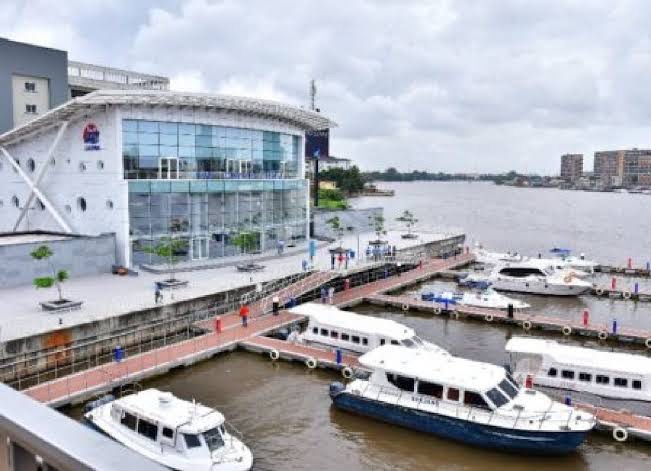GRBusiness
Africa accounts for 32% of piracy incidents globally, says Allianz report
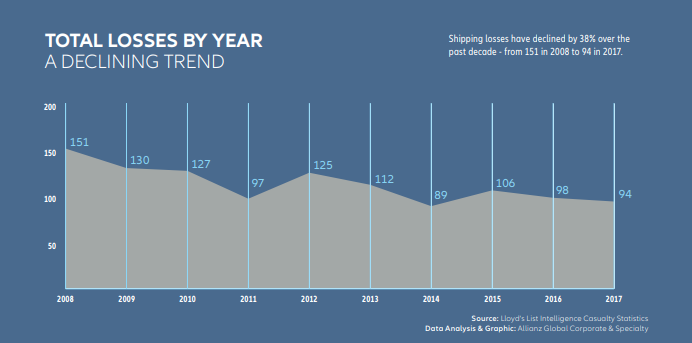

Large shipping losses have declined by more than a third (38%) over the past decade, according to Allianz Global Corporate & Specialty SE’s (AGCS) Safety & Shipping Review 2018, with this downward trend continuing in 2017.
Yet recent events such as the collision of the oil tanker “Sanchi” and the impact of the NotPetya malware on harbor logistics underline that the shipping sector is being tested by a number of traditional and emerging risk challenges.
There was a total of 94 shipping losses reported around the world in 2017, down 4% year-on-year (98) – the second lowest in 10 years after 2014.
Bad weather, such as typhoons in Asia and hurricanes in the US, contributed to the loss of more than 20 vessels, according to the annual review, which analyzes reported shipping losses over 100 gross tons (GT).
“The decline in frequency and severity of total losses over the past year continues the positive trend of the past decade. Insurance claims have been relatively benign, reflecting improved ship design and the positive effects of risk management policy and safety regulation over time,” says Baptiste Ossena, Global Product Leader Hull & Marine Liabilities, AGCS. “However, as the use of new technologies on board vessels grows, we expect to see changes in the maritime loss environment in future. The number of more technical claims will grow – such as cyber incidents or technological defects – in addition to traditional losses, such as collisions or groundings.”
There are multiple new risk exposures for the shipping sector: Ever-larger container ships – longer than the Empire State Building is high – pose fire containment and salvage issues. The changing climate brings new route risks, with fast-changing conditions in Arctic and North Atlantic waters posing new hazards. Environmental scrutiny is growing as the industry seeks to cut emissions, bringing new technical risks and the threat of machinery damage incidents at the same time. Shippers continue to grapple with balancing the benefits and risks of increasing automation on board.
The NotPetya cyber-attack caused cargo delays and congestion at nearly 80 ports, underlining the threat of cyber risks for the sector.
Losses in Africa
The West Africa Coast maritime region is the eighth top location for shipping losses around the world in 2017 with three ships lost – the same level of activity as 12 months earlier. Losses occurred in Senegal, Sierra Leone and Nigeria.
The area is the sixth top loss location over the past decade with 51 ships lost at an average of five a year.
The West Africa Coast is also the tenth top location in the world for shipping incidents with 707 reported incidents in 10 years.
The East Africa Coast maritime region saw two ships lost in 2017 – making it the joint tenth top hotspot overall. Losses occurred in South African and Kenyan waters. The East African Coast is the eight top loss location over the past decade with 34 ships lost at an average of three a year. The Red Sea region has seen 12 ships lost over the past decade.
Piracy levels are down
Piracy activity levels are down year-on-year across Africa with 57 incidents in total during 2017, down 8% (62 incidents in 2016). Africa accounts for 32% of piracy incidents globally (180 in total in 2017), second after South East Asia region.
The Gulf of Guinea remains the regional piracy hot spot with 36 reported incidents in 2017; accounting for 63% of African piracy incidents. However, incidents off the coast of Somalia – which has seen dramatic safety improvements in recent years – increased year-on-year from two incidents in 2016 to nine in 2017.
Drones will have an increasing role in spotting and avoiding hazards at sea. The European Union Naval Force’s anti-piracy naval mission has deployed drones to monitor the coast of Somalia and search for pirate activity.
“The threat of piracy remains, albeit less pronounced than in recent years. “Hijackings and the boarding of vessels continue, tied to inequality and the economic situation in parts of Africa and Asia. It behooves us all to understand that global economic and geopolitical conditions play on the security of shipping,” explains Senior Marine Risk Consultant, at AGCS.
Dangerous seas, Friday 13th and the unluckiest ship
Almost a third of shipping losses in 2017 (30) occurred in the South of China, Indochina, Indonesia and Philippines maritime region, up 25% annually, driven by activity in Vietnamese waters. This area has been the major global loss hotspot for the past decade, leading some media commentators to label it the “new Bermuda Triangle”.
The major loss factors are actually weather – in November 2017, Typhoon Damrey caused six losses – busy seas and lower safety standards on some domestic routes. Outside of Asia, the East Mediterranean and Black Sea region is the second major loss hotspot (17) followed by the British Isles (8). There was also a 29% annual increase in reported shipping incidents in Arctic Circle waters (71), according to AGCS analysis.
Cargo vessels (53) accounted for over half of all vessels lost globally in 2017. Fishing and passenger vessel losses are down year-on-year. Bulk carriers accounted for five of the 10 largest reported total losses by GT.
The most common cause of global losses remains foundering (sinking), with 61 sinkings in 2017. Wrecked/stranded ranks second (13), followed by machinery damage/failure (8).
Analysis shows Friday is the most dangerous day at sea – 175 losses of 1,129 total losses reported have occurred on this day over the past decade. Friday 13th really can be unlucky – three ships were lost on this day in 2012 including Costa Concordia, the largest-ever marine insurance loss.
The unluckiest ship of the past year is a passenger ferry operating in the East Mediterranean and Black Sea region – it was involved in seven accidents in 12 months.
Human error, still a big issue. Data can help.
Despite decades of safety improvements, the shipping industry has no room for complacency. Fatal accidents such as the “Sanchi” oil tanker collision in January 2018 and the loss of the “El Faro” in Hurricane Joaquin in late 2015 persist and human behavior is often a factor. It is estimated that 75% to 96% of shipping accidents involve human error[1].
It is also behind 75% of 15,000 marine liability insurance industry claims analyzed by AGCS – costing $1.6bn[2].
“Human error continues to be a major driver of incidents,” says Captain Rahul Khanna, Global Head of Marine Risk Consulting, AGCS. “Inadequate shore-side support and commercial pressures have an important role to play in maritime safety and risk exposure. Tight schedules can have a detrimental impact on safety culture and decision-making.”
Better use of data and analytics could help. The shipping industry produces a lot of data but could utilize it better, producing real-time findings and alerts, Khanna believes.
“By analyzing data 24/7 we can gain new insights from crew behavior and near-misses that can identify trends. The shipping industry has learned from losses in the past but predictive analysis could be the difference between a safe voyage and a disaster.”
Shippers get serious about cyber threat, as penalties increase
Cyber incidents like the global NotPetya malware event have been a wake-up call for the shipping sector. Many operators previously thought themselves isolated from this threat. “As technology on board increases, so do the potential risks,” says Khanna. At the same time, new European Union laws such as the Network and Information Security Directive (NIS), which requires large ports and maritime transport services to report any cyber incidents and brings financial penalties, will exacerbate the fall-out from any future failure – malicious or accidental.
“The current lack of incident reporting masks the true picture when it comes to cyber risk in the marine industry,” says Khanna. “The NIS directive will bring more transparency around the scale of the problem.”
Other risk topics identified in the review include:
Container ship fire struggles continue: Container-carrying capacity has increased by almost 1,500% in 50 years. Today’s “mega-ships” create new risk exposures and there have been a number of fires at sea in recent years. Fire-fighting capabilities have not necessarily kept pace with increasing vessel sizes.
Climate change brings new route risks: Climate change is impacting ice hazards for shipping, freeing up new trade routes in some areas, while increasing the risk of ice in others – over 1,000 icebergs drifted into North Atlantic shipping lanes last year[3], creating potential collision hazards. Cargo volumes on the Northern Sea Route reached a record high in 2017.
Emissions rules bring problems: Estimates suggest that the shipping sector’s emissions levels are as high as Germany’s, prompting a recent pledge to reduce all emissions by 50% in the long-term, alongside existing commitments to reduce sulphur oxide emissions by 2020.
As the industry looks to technical solutions to achieve these aims, there could be accompanying risk issues with engines and bunkering of biofuels, as well as operator training.
Autonomous shipping and drones: Legal, safety and cyber security issues are likely to limit widespread growth of crewless ships for now. Human error risk will still be present in decision-making algorithms and onshore monitoring bases.
Drones and submersibles have the potential to make a significant contribution to shipping safety and risk management.
Future use could include pollution assessment, cargo tank inspections, monitoring pirates and assessment of the condition of a ship’s hull in a grounding incident.


Source: TechEconomy.ng
Finance
AISA Has Refunded The Fees Paid By Yahaya Bello To EFCC


The Economic and Financial Crimes Commission (EFCC) says the American International School Abuja (AISA) has refunded the fees paid by the immediate past governor of Kogi state, Yahaya Bello, for his children attending the school.
In response to a letter addressed to the Lagos zonal commander of the EFCC, the school said $845,852 was paid in tuition “since the 7th of September 2021 to date”.
AISA said the sum to be refunded is $760,910 because it had deducted educational services already rendered.
“Please forward to us an official written request, with the authentic banking details of the EFCC, for the refund of the above-mentioned funds as previously indicated as part of your investigation into the alleged money laundering activities by the Bello family.
Since the 7th September 2021 to date, $845,852.84 (Eight Hundred and Forty-Five Thousand, Eight Hundred and Fifty Two US Dollars and eighty four cents) in tuition and other fees has been deposited into our Bank account.
We have calculated the net amount to be transferred and refunded to the State, after deducting the educational services rendered as $760,910.84. (Seven Hundred and Sixty Thousand, Nine Hundred and Ten US Dollars and Eighty Four cents).
No further additional fees are expected in respect of tuition as the students’ fees have now been settled until they graduate from ASIA.”
In a chat with The Cable, the spokesperson of the EFCC, Dele Oyewale, confirmed that the school has refunded the money.
‘’The money has been paid into public account,” Dele Oyewale was quoted as saying
Finance
Godwin Emefiele Disobeyed Direction Of Law With Intent To Harm The Public, He Printed ₦684.5M Using ₦18.9B Says EFCC in fresh charge


The Economic and Financial Crimes Commission has filed a fresh charge at the High Court of the Federal Capital Territory against the embattled former governor of the Central Bank of Nigeria, Godwin Emefiele.
EFCC in the charge accused Emefiele of approving the printing of N684,590,000 at the rate of N18.96 billion.
EFCC also alleged that Emefiele broke the law with intent to harm the public during his implementation of the naira swap policy of the administration of former President Muhammadu Buhari.
The anti-graft agency also accused Emefiele of unlawfully approving the withdrawal of N124.8 billion from the Consolidated Revenue Fund of the Federation.
EFCC’s top prosecutor, Rotimi Oyedepo, SAN revealed that Emefiele will be arraigned on a new four-count charge before Justice Hamza Muazu
Counts one to four of the charge, read,
“STATEMENT OF OFFENCE: Public Servant disobeying direction of law with intent to cause injury to the public contrary to and punishable under Section 123 of the Penal Code Law, Cap. 89 Laws of the Federation, 1990.
“PARTICULARS OF THE OFFENCE: That you GODWIN IFEANYI EMEFIELE between the 19th day of October 2022 and 5th March 2023 in Abuja, knowingly disobeyed the direction of Section 19 of the CBN Act, 2007, by approving the printing of N375,520,000.00 pieces of colour swapped N1, 000, at the total cost of N11,052, 068,062 without the recommendation of the Board of Central Bank and the strict approval of the President, Federal Republic of Nigeria which conduct of yours caused injury to the public and you thereby committed an offence.”
This and three other charges were stated against him. They read;
“COUNT 2: “That you, GODWIN IFEANYI EMEFIELE, between the 19th of October 2022 and 5th March 2023 in Abuja, knowingly disobeyed the direction of Section 19 of the Central Bank of Nigeria Act, 2007, by approving the printing of 172,000,000 pieces of colour swapped N500 (Five Hundred Naira) Notes, at the total cost of N4, 471,066,040 without the recommendation of the Board of Central Bank and the strict approval of the President, Federal Republic of Nigeria which conduct of yours caused injury to the public and you thereby committed an offence.
“COUNT 3: “That you GODWIN IFEANYI EMEFIELE between the 19th day of October 2022 and 5th March 2023 in Abuja, knowingly disobeyed the direction of Section 19 of the CBN Act, 2007, by approving the printing of 137,070,000 pieces of colour swapped N200 (Two Hundred Naira) Note, at the total cost of N3, 441, 005, 280 without the recommendation of the Board of Central Bank and the strict approval of the President, Federal Republic of Nigeria which conduct of yours caused injury to the public and you thereby committed an offence.”
“COUNT 4: “That you, GODWIN IFEANYI EMEFIELE, on or about the 7th day of October 2020, in Abuja, within the jurisdiction of this Honorable Court, knowingly disobeyed the direction of Section 80 of the Constitution of the Federal Republic of Nigeria, 1999 (As Amended), by approving the withdrawal of the total sum of N124, 860, 227, 865.16 from the Consolidated Revenue Fund of the Federation in a manner not prescribed by the National Assembly, which conduct of yours caused injury to the public and you thereby committed an offence.”
Transport
Federal Government To Launch Out 2700 CNG Buses, Tricycles Ahead Of First anniversary Of Tinubu’s Administration
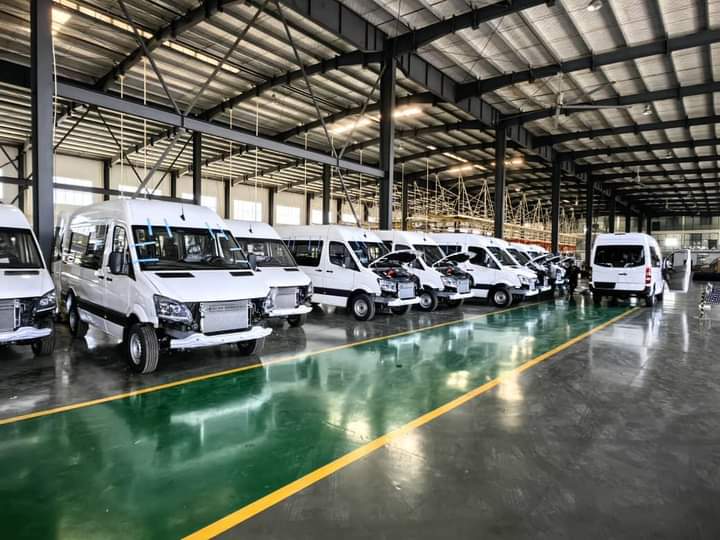

The Presidency on Sunday said it was ready to launch about 2,700 CNG-powered buses and tricycles before May 29 when President Bola Tinubu turns one year in office.
“All is now ready for delivery of the first set of critical assets for deployment and launch of the CNG initiative ahead of the first anniversary of the Tinubu administration on May 29.”
It said the Federal Government is set to deliver 100 conversion workshops and 60 refuelling sites spread across 18 states before the end of 2024.
The Special Adviser to the President on Information and Strategy, Mr. Bayo Onanuga, revealed this in a statement he signed Sunday titled ‘Presidential CNG initiative set for rollout.’
“From the end of May, Nigeria will take some baby steps to join such nations that already have large fleets of CNG vehicles.




“All is now ready for delivery of the first set of critical assets for deployment and launch of the CNG initiative ahead of the first anniversary of the Tinubu administration on May 29.
“About 2,500 of the tricycles will be ready before May 29, 2024…working towards delivering 200 units before the first anniversary of the Tinubu administration,” said the Presidency.
He also said that over 600 buses are targeted for production in the first phase which will be accomplished in 2024.
In October 2023, about five months after the removal of the petrol subsidy, President Tinubu launched the Presidential CNG Initiative to deliver cheaper, safer and more climate-friendly energy.
The CNG Initiative was designed to deliver compressed natural gas, especially for mass transit.
The Federal Government earmarked N100bn (part of the N500bn palliative budget) to purchase 5500 CNG vehicles (buses and tricycles), 100 Electric buses and over 20,000 CNG conversion kits, with plans to develop CNG refilling stations and electric charging stations nationwide.
The FG had said the initiative would ease the burden of the increased pump price on the masses.More information added that the creation of a new plant on the Lagos-Ibadan Expressway that will assemble the tricycles while Brilliant EV will assemble electric vehicles when it receives the Semi Knocked Down components.


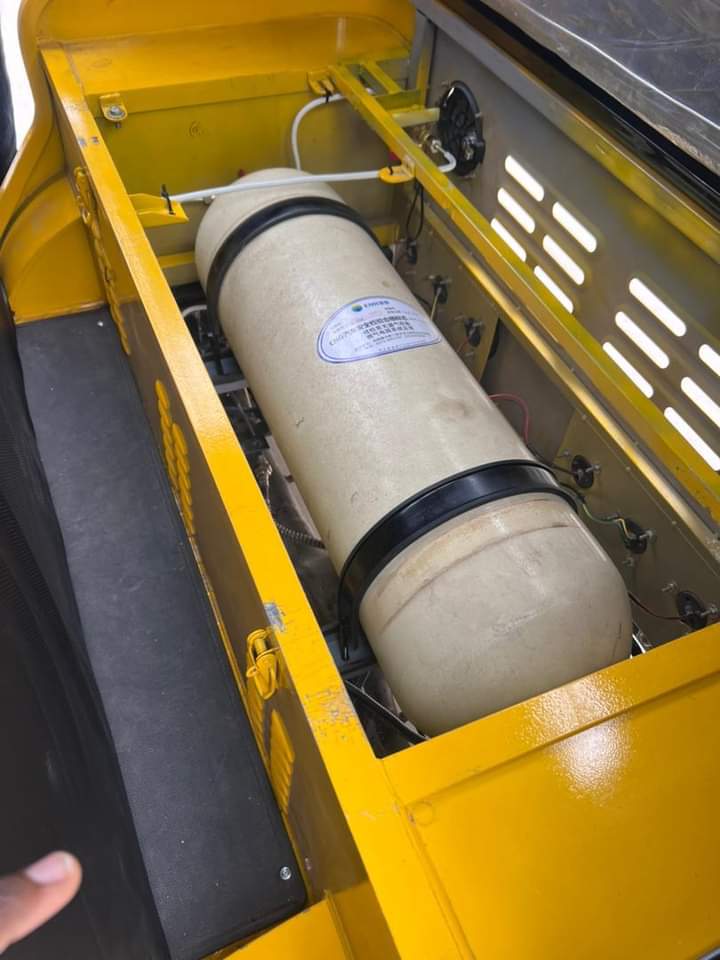

The Presidency explained further, “The SKD parts manufactured by the Chinese company LUOJIA in partnership with its local partner to support the consortium of local suppliers of CNG tricycles are set for shipment to Nigeria and expected to arrive early in May.
It is expected that before 2027, There’ll be a considerable wave of these buses and tricycles in use.
-



 Politics4 days ago
Politics4 days ago“Fuel Subsidy Removal Was A Necessary Action To Prevent Nigeria From Going Bankrupt” – President Tinubu
-

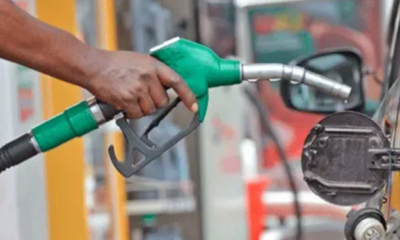

 News4 days ago
News4 days agoFuel Price Skyrockets To ₦1000 Per Litre In Some States As Scarcity Sets In
-



 News3 days ago
News3 days ago“There Would Be total Blackout For Three Months If Electricity Tariff Hike Is Not Implemented ” – Minister Of Power Warns
-



 News3 days ago
News3 days agoFG Declares May 1st Public Holiday To Mark Workers’ Day
-



 News1 day ago
News1 day agoAnambra State Government Arrests Man For Marrying Off His Underage Daughter
-



 News2 days ago
News2 days agoNigerians Seek Woman Who Spoke Out Eloquently Against Fuel Scarcity In Viral 1994 TV Clip
-



 News17 hours ago
News17 hours agoIPOB Declares May 30th As Sit-at-home Day Across The Southern East States To Honour Biafran Fallen Heroes


